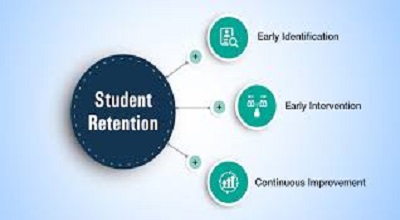Students’ Knowledge Retention
Students’ Knowledge Retention: In today’s fast-paced educational landscape, ensuring students retain what they learn is more critical than ever. Teachers and educators constantly seek innovative methods to enhance knowledge retention, yet many struggle with traditional rote learning techniques that fail to engage students long-term.
This comprehensive guide explores science-backed strategies to double your students’ retention of knowledge, making learning more effective, engaging, and lasting. Whether you’re a classroom teacher, online educator, or academic coach, these methods will transform your teaching approach.
Why Knowledge Retention Matters
The Science of Learning and Memory
Human memory operates in three key stages:
- Encoding (processing information)
- Storage (retaining information)
- Retrieval (recalling information)
Research from cognitive psychology shows that students forget up to 70% of new information within 24 hours if not reinforced properly (Ebbinghaus Forgetting Curve).
Challenges in Traditional Teaching Methods
- Lecture-heavy approaches lead to passive learning.
- Cramming before exams results in short-term memorization.
- Lack of engagement reduces long-term retention.
Solution: Shift from passive to active learning strategies.
Active Learning Techniques to Boost Retention
Spaced Repetition
Instead of massed practice (cramming), spacing out learning sessions strengthens memory. Tools like Anki and Quizlet use algorithms to optimize review timing.
Retrieval Practice (The Testing Effect)
- Recall strengthens memory more than re-reading.
- Use low-stakes quizzes, flashcards, and exit tickets.
Interleaving vs. Blocked Learning
- Blocked learning: Mastering one topic at a time.
- Interleaving: Mixing different topics for better retention (e.g., alternating math problems).
Engagement Strategies for Deeper Learning
Gamification in Education
- Points, badges, leaderboards increase motivation.
- Platforms like Kahoot! and Classcraft make learning fun.
Storytelling and Mnemonics
- Narratives help embed facts in memory.
- Acronyms and rhymes (e.g., “PEMDAS” for math order of operations).
Peer Teaching (The Protégé Effect)
- Students retain 90% of what they teach others.
- Use think-pair-share and group presentations.
Leveraging Technology for Better Retention
AI-Powered Adaptive Learning
- Tools like Squirrel AI personalize learning paths.
Interactive Videos & Simulations
- Edpuzzle and Labster engage visual and kinesthetic learners.
Digital Flashcards & Quiz Apps
- Brainscape, Memrise optimize spaced repetition.
The Role of Emotions in Learning
- Positive reinforcement (praise, rewards) boosts retention.
- Stress and anxiety impair memory—create a supportive environment.
Assessment Techniques That Improve Retention
- Frequent, low-stakes quizzes > high-pressure exams.
- Timely feedback helps correct mistakes early.
Long-Term Retention: Making Knowledge Stick
- Metacognition: Teach students how to learn.
- Project-based learning applies knowledge in real-world contexts.
FAQs on Doubling Student Retention
Q1: How long does it take to see improvements in retention?
A: With consistent active learning strategies, noticeable improvements occur within 4-6 weeks.
Q2: Can these methods work for all age groups?
A: Yes! Adjust complexity—K-12 to higher education benefit from these techniques.
Q3: Do I need expensive tools to implement these strategies?
A: No! Free tools like Quizlet, Kahoot!, and Anki are highly effective.
Q4: How much time should be spent on retrieval practice?
A: 10-15 minutes daily yields significant long-term benefits.
Q5: What’s the biggest mistake teachers make with retention?
A: Overloading students with information without reinforcement—spacing and retrieval are key.
Conclusion
Doubling student retention isn’t about working harder—it’s about working smarter. By integrating spaced repetition, retrieval practice, engagement strategies, and technology, educators can create a lasting impact on their students’ learning journeys.
